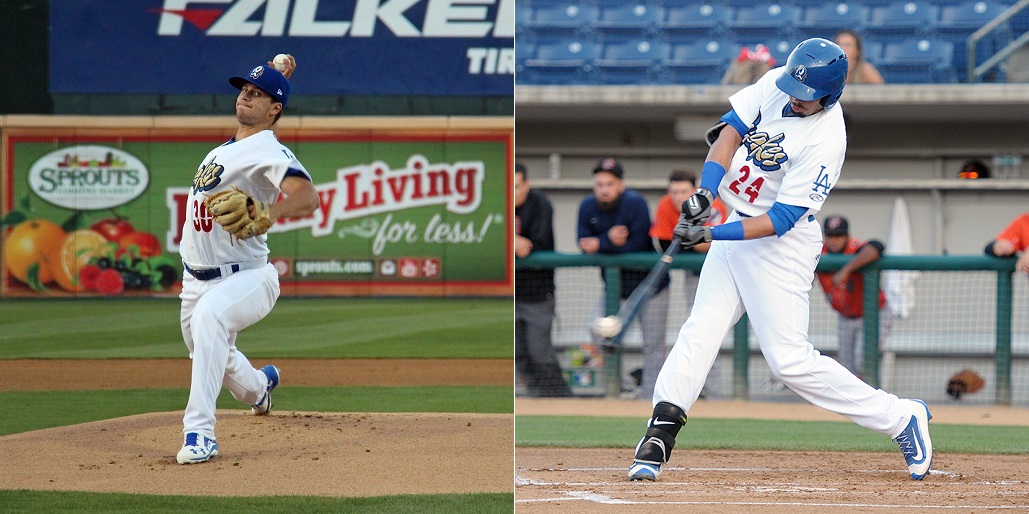By the time most minor leaguers reach the Advanced Single-A level every MLB team already has them on their radar and has a book on them. Granted, some of these kids have already been unceremoniously scratched off the respective team’s list of who to watch by their scouting staffs – most, in fact – but the players who have a legitimate shot at making it to The Show are already in the notebooks of most professional scouts; and make no mistake about it, these guys definitely talk amongst themselves.
“It’s tough to lose those guys but that’s what this is all about.“ – Drew Saylor
Although winning a minor league championship is a very big deal for every player, coach and manager on every minor league level, this is not what the minor leagues are all about. And while it is human nature for these kids who have spent their entire lives competing and playing to win at every level to continue to do so, the sole, absolute single purpose of the minor leagues is to locate, educate and develop these kids to ensure the very future of our national pastime – period.
Over the past three or four weeks, the Dodgers Advanced Single-A Rancho Cucamonga Quakes – the defending 2015 Cal League champions – have seen their roster absolutely decimated by the promotion (and trade) of the team’s best pitchers and position players. They lost their three best starters in Andrew Sopko, Josh Sborz and Grant Holmes, who were responsible for 27 of the team’s 63 wins this season; and their best hitters in Kyle Garlick, Tim Locastro, Jordan Tarsovich and, more recently, sluggers Joey Curletta and Edwin Rios, who accounted for a combined 50 home runs and 147 runs batted in. In other words, the Quakes have lost the very heart of their team and are now in serious danger of not repeating as Cal League champions.
“It’s tough to lose those guys but that’s what this is all about,” said Quakes manager Drew Saylor. “When players move up it opens the door for other players. We’ll be fine.”

There is no disputing that the loss of right-hander Andrew Sopko and slugger Edwin Rios has been a devastating blow to the Quakes, but as manager Drew Saylor put it “We’ll be fine.” (Photo credit – Ron Cervenka and Steve Saenz)
Anyone who has spent even a few minutes around the youthful 32-year-old Quakes manager – who looks as though he could still run out onto the field and play today – knows that he absolutely exudes energy, enthusiasm and, most importantly, confidence that his players absorb like a sponge. And though Saylor’s team has lost five of their last seven games since Rios, Curletta, Sopko and Sborz were promoted to the Double-A Tulsa Drillers (and Holmes traded to the Oakland Athletics), their loss has led to the promotion of Dodgers 2016 first-round compensatory draft pick catcher Will Smith and pitchers Michael Boyle and Wes Helsabeck from the Low Single-A Great Lakes Loons.
Additionally, because of it’s close proximity to Dodger Stadium, Rancho Cucamonga is where many (most, in fact) rehabbing Dodgers are assigned as they make their way back to the parent team; that’s the good news. The down side to this is that the rehabbing players – especially pitchers – are more focused on working on getting back into game shape and working on their pitches than they are about actually winning games. In fact, recently re-activated Dodgers super utility player Enrique Hernandez (Kiké) summed it up best while rehabbing with the Quakes prior to the promotions of Rios and Curletta.
“These guys didn’t need any help from me, these guys rake!” said Hernandez of the (then) red hot Quakes offense.
For die-hard Quakes fans, many of whom are host families and sponsors for these 19 to 24-year-olds who are miles (and countries) away from their real homes, the promotion and/or trade of their “adopted” sons and brothers is just as heartbreaking as if they had sent off a real family member. But when they see these kids succeed at the higher minor league levels and on rare occasion at baseball’s highest level, they feel as sense of pride in knowing that they played a major role in those successes – just as Drew Saylor and the rest of his player development staff do.




 August 4th, 2016 at 6:00 am
August 4th, 2016 at 6:00 am  by Ron Cervenka
by Ron Cervenka  Posted in
Posted in 

I think it is a testament as to the quality of Drew Saylor and his player development skills that got his players ready to move to AA. While Advanced A is in fact when prospects really burst onto the scene, most of the minor league prospects that I have talked to said that the step from Advanced A to AA is tougher than the jump from AA to AAA. It can be argued that AA is the toughest link in the advancement change (especially mid year). It takes a great player development guy to ready the true prospects. Not only congratulations to the players that got the promotion, but also to Drew Saylor and his coaches, Rafael Ozuna, Kip Wells, and Jay Gibbons.